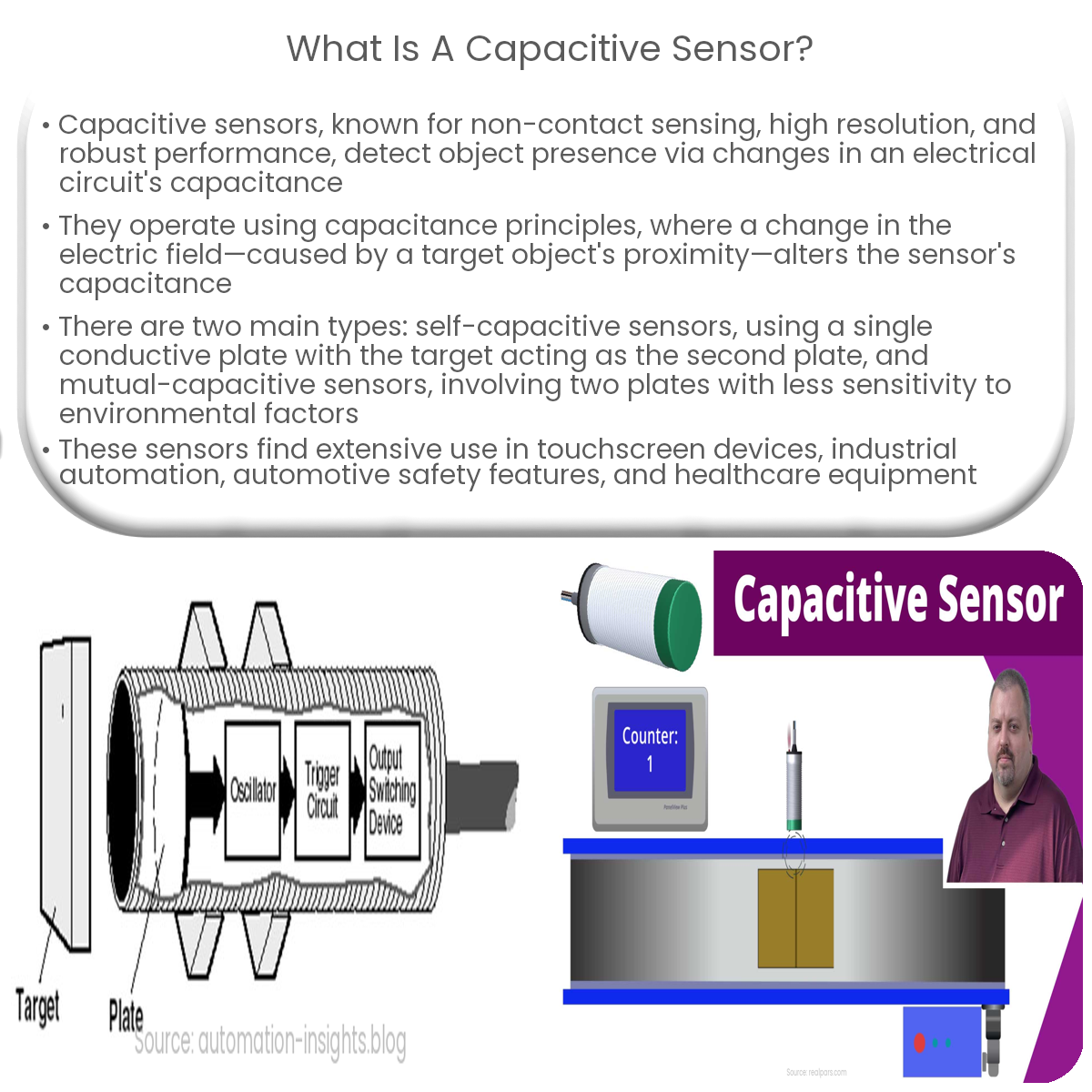A capacitive sensor is a proximity sensor that detects objects based on changes in capacitance, used in touchscreens, automation, automotive, and healthcare.
Introduction to Capacitive Sensors
A capacitive sensor is a type of proximity sensor that detects the presence or absence of a target object based on changes in the capacitance of an electrical circuit. These sensors are widely used in various applications due to their non-contact sensing capabilities, high resolution, and robust performance in various environmental conditions.
Working Principle of Capacitive Sensors
Capacitive sensors operate on the principle of capacitance, which is the ability of a system to store an electrical charge. A capacitive sensor consists of two conductive plates separated by an insulating material, also known as a dielectric. When a voltage is applied to the conductive plates, an electric field is generated, and the sensor stores an electrical charge. The capacitance of the sensor is directly proportional to the surface area of the plates, the dielectric constant of the insulating material, and inversely proportional to the distance between the plates.
When a target object, conductive or dielectric, approaches the sensing area, it alters the electric field, causing a change in the capacitance. This change in capacitance is detected and processed by the sensor’s electronics to determine the presence or absence of the target object.
Types of Capacitive Sensors
- Self-capacitive sensors: These sensors rely on a single conductive plate, and the target object acts as the second plate. The change in capacitance is measured relative to a reference capacitance.
- Mutual-capacitive sensors: These sensors use two conductive plates, and the target object causes a change in capacitance by affecting the electric field between the plates. Mutual-capacitive sensors are less sensitive to environmental factors compared to self-capacitive sensors.
Applications of Capacitive Sensors
Capacitive sensors are employed in a wide range of applications, including:
- Touchscreen devices: smartphones, tablets, and laptops use capacitive sensors to detect the touch input from users.
- Industrial automation: capacitive sensors are used for position and level sensing, detecting the presence or absence of materials, and controlling robotic systems.
- Automotive: they are implemented in various safety features, such as rain-sensing wipers, seat occupancy detection, and keyless entry systems.
- Healthcare: capacitive sensors can be found in medical equipment like infusion pumps and blood pressure monitors.
In conclusion, capacitive sensors are a versatile and reliable sensing technology that offers non-contact detection, high resolution, and robust performance in various applications.


